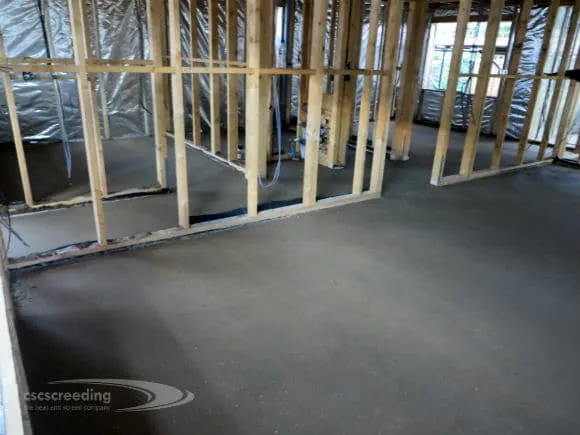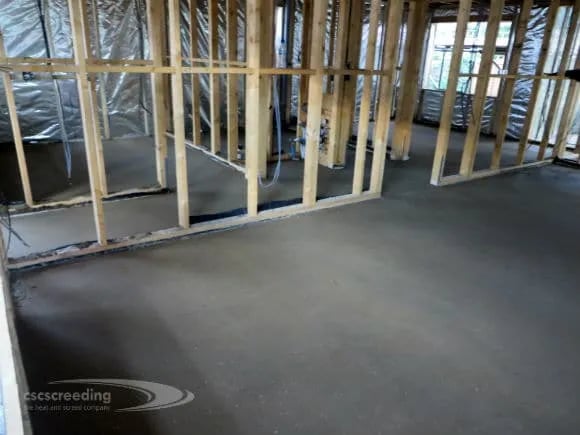
50 shades of Grey: your guide to floor screed

Every room is a Grey room! Can you handle it?
A beautiful floor laying at your feet; pleasant warmth and more comfort than you’ve ever dreamed of…Well, you’ve guessed it right. All these can only be achieved by choosing a modern underfloor heating system along with the right type of screed, which must be prepared and installed correctly to withstand all the hardships you will throw at it.
A floor screed consists of a thin layer of cementitious material typically laid on top of structural concrete. All screeds must be installed to predetermined specifications in order to deliver a solid sub-floor, at an adequate depth.
Traditionally, screeds are made from ordinary Portland cement and aggregates, in a 1:3-5 ratio, and combined with potable water to obtain a workable mixture. Another point important to you and your pocket is that polymer-modified toppings, such as free-flowing and fast-drying screeds, have been developed to deliver faster drying times, reduced thicknesses, superior resistance to impact and friction, and impressive thermal conductivity in underfloor heating, at lower costs and without compromising the quality of the end result.
Today, screeds can be installed in a range of thicknesses, with the purpose of bringing the sub-floor to a predefined height and providing a surface suitable for installing different decorative treatments, ranging from stone, ceramic, linoleum, and carpet to wood flooring.
Depending on the specifications of each project, (in general terms: always consult a specialist and verify the relevant product datasheet)) a screed may be:
- bonded directly to the base, with a minimum thickness of 15mm for screeds bonded with epoxy resins;
- unbonded, case in which screeds are applied in layers of 50mm (traditional screeds) or 40mm (modified screeds) to Damp Proof Membranes or polyethylene sheets, placed on top of the concrete structure;
- installed as a floating finish over rigid insulation, such as polyurethane panels or expanded polystyrene; floating screeds must be applied at a minimum thickness of 65mm (light-foot traffic) or 75mm (heavy traffic); this is for traditional screeds. However proprietary and anhydrite screeds can be thinner.
- installed on top of underfloor heating at a minimum depth of 75mm (traditional screeds on commercial floors), with at least 30mm over pipes, or 45mm (calcium sulphate-based screeds on commercial floors), with 25mm over the heating elements.

No matter your project, we always have 50 shades of grey!
To deliver impeccable results, screeders must select the right screed mixture for each job, consider moisture levels and ambient conditions (relative humidity, air and floor temperature, and ventilation), check specifications along with curing and drying times for each type of screed, take into account the type of floor finish to be installed, and test the end result to ensure adequate performance of screeds in service.
Regardless of whether you are planning a new building or a home improvement project, you can get a sturdy sub-floor, reinforce and level the concrete slab, raise it to the desired level, and enhance the efficiency of your underfloor heating system by simply choosing the right screeding contractor.
Over the years, we’ve earned recognition for using high-quality materials, fostering innovation, embracing the latest screeding technologies, and meeting a variety of design, functional, and aesthetic requirements to make a real difference for our customers. To benefit from the best screed and underfloor heating performance, contact HomeScreed by calling 0845 500 4055, using our online form, or email us at info@cscscreeding.co.uk.
If you found this article interesting, you may like to read: 5 unusual places for underfloor heating or What do I do once the screed is laid?
